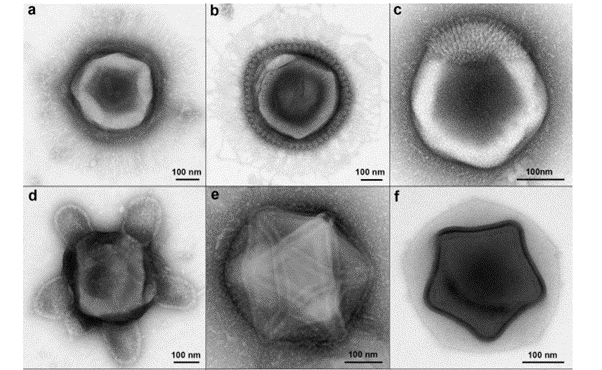An “astounding” and “unexpected” array of giant virus-like particles have been found lingering in the soil of Harvard Forest, Massachusetts. Not only are they abnormally large, but they’re also pretty weird, with “previously unimaginable” structures that throw into question everything we know about giant viruses and viral diversity.
“The cornucopia of viral morphotypes found in Harvard Forest alone questions our current understanding of the virosphere and its structural heterogeneity,” write the authors of a preprint, which is yet to be peer-reviewed, describing the findings.
“This fascinating window into the complex world of soil viruses leaves little doubt that the high genetic diversity of giant viruses is matched by diverse and previously unimaginable particle structures, whose origins and functions remain to be studied.”
The strange virus particles boast equally strange appendages and internal structures, some of which have never been seen before and could suggest novel ways that viruses interact with their hosts. These include tubular protrusions, fibers, internal channels, double capsids (the protein shell of a virus), and tails, which have earned them whimsical names such as “turtle”, “haircut”, and “Christmas star” viruses.

Giant virus-like particles named for what their unique structural features resemble: a) “Mimi-like” b) “supernova” c) “haircut” d) “turtle” e) “plumber” f) “Christmas star”.
Virus-like particles are derived from viruses and closely resemble them, although they lack genetic material and are not capable of infecting a host cell. However, the authors of the preprint argue that the large icosahedral (20-sided) particles with modified capsids they found can confidently be called “virus particles”.
Using transmission electron microscopy, the team revealed that their soil samples were packed with “an unexpected diversity of soil [virus-like particles] in the 0.2 µm to 1.2 µm size fraction.” To put this into context, the largest virus ever discovered, resurrected from Siberian permafrost in 2014, was 1.5 µm wide, comparable in size to a small bacterium.
“Amazingly, we found that a few hundred grams of forest soil contained a greater diversity of capsid morphotypes than that of all hitherto isolated giant viruses combined,” the team write. “This observation is even more astounding when considering that we imaged only an infinitesimally small fraction of the viral diversity present in these soil samples.”
The findings highlight just how much we still have to learn about the weird and wonderful world of giant viruses, which, the researchers hope, others will now be inspired to explore. They are particularly interested in investigating whether this extraordinary diversity is just a feature of soil ecosystems, or whether aquatic environments are also home to an abundance of massive virus particles.
The preprint is available at bioRxiv.
Source Link: Giant Viruses With "Unimaginable" Features Discovered In Massachusetts Soil